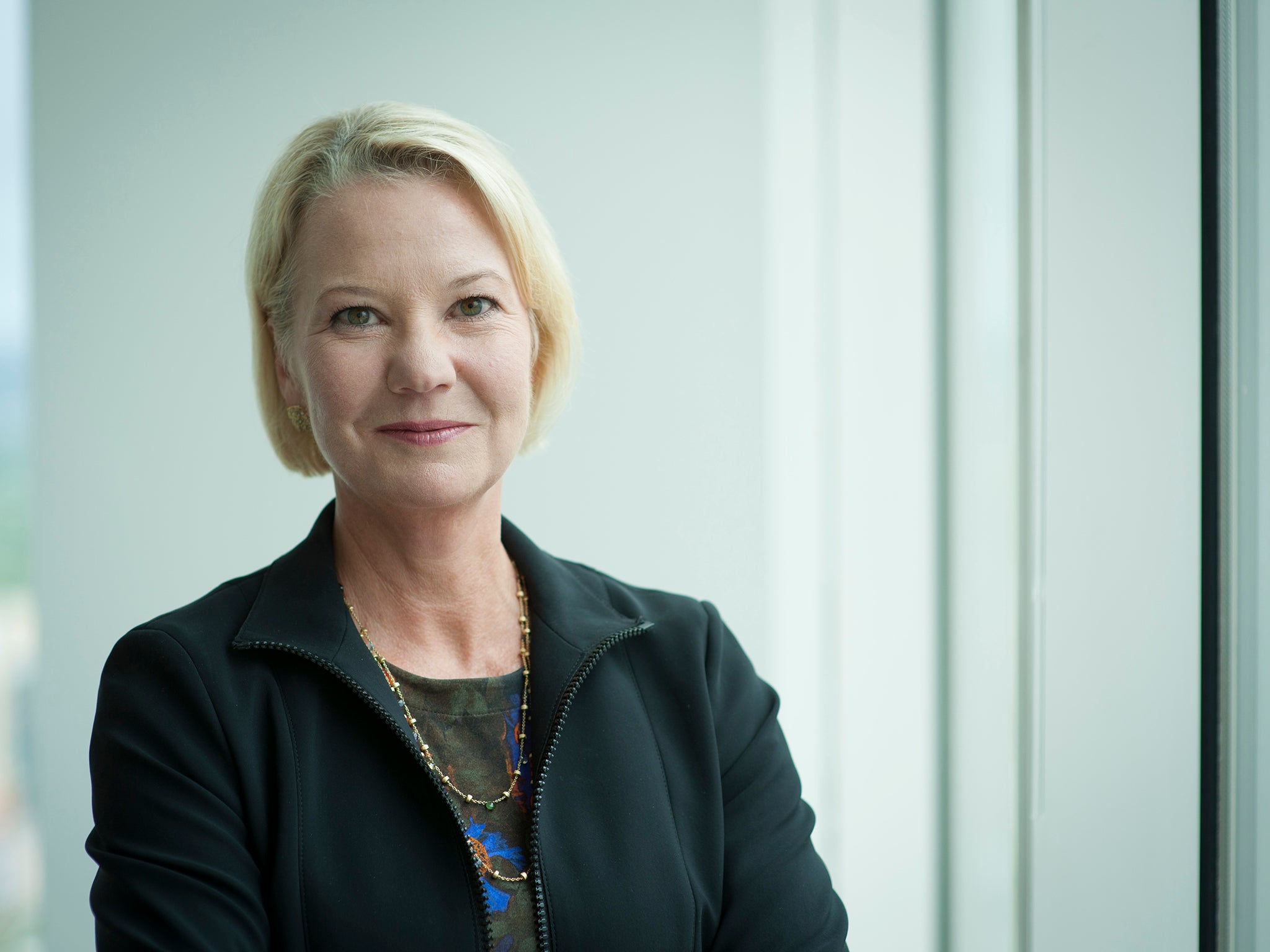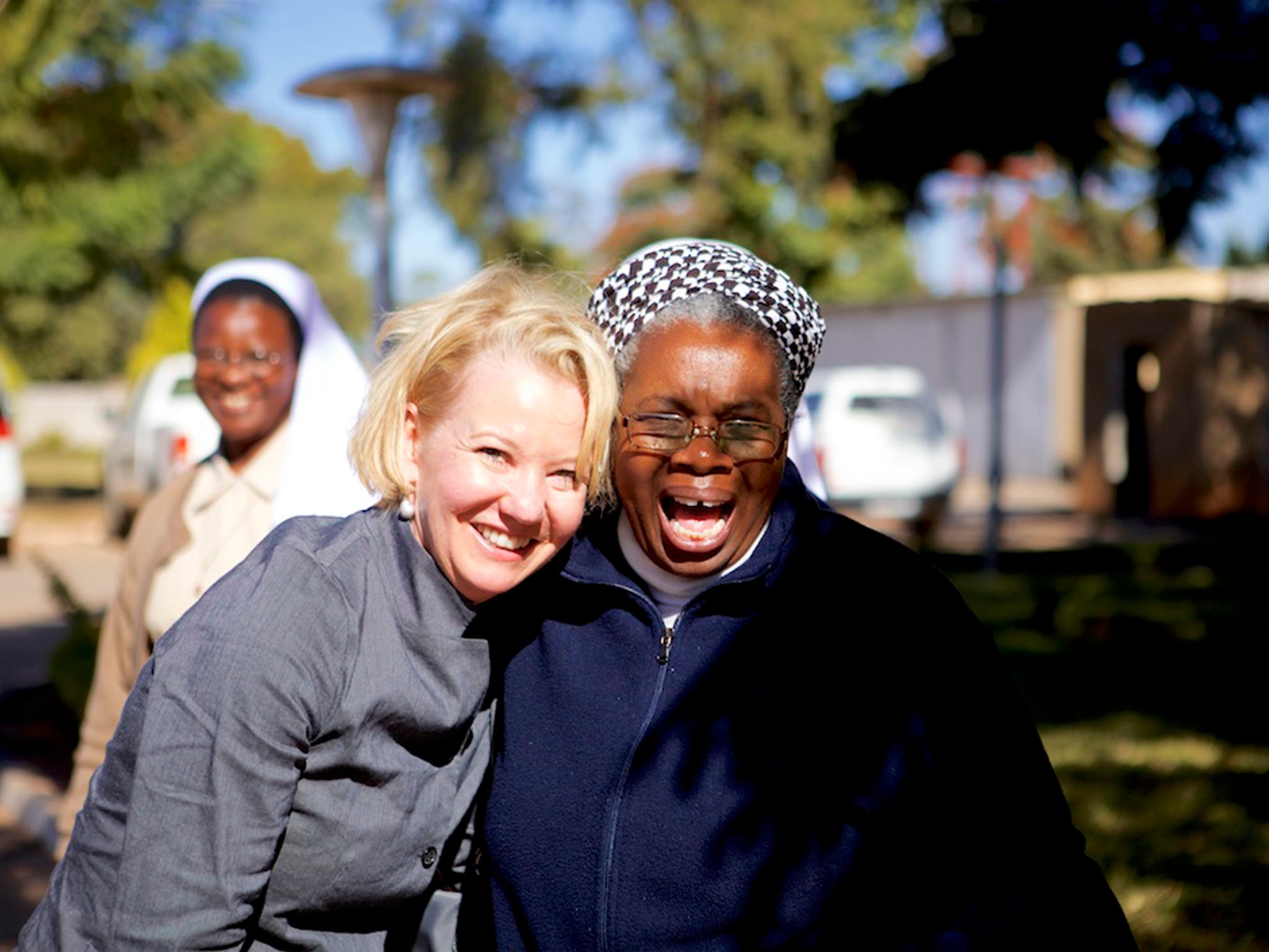‘We’ve forgotten we’re one human family’: The woman bringing optimism back to innovation
With major crises requiring attention across the globe, writes Zlata Rodionova, Amy Goldman and the GHR Foundation are on a mission to change as much as they can by combining innovation with optimism


For those who still believe in the value of philanthropy as a tool to shape society for the better, there is a lot of work to be done. From climate change to a growing refugee crisis, major challenges are demanding fast action and new models are required to find the appropriate solutions.
Yet Amy Goldman, a philanthropist and chief executive and chair of the GHR Foundation, believes innovation combined with some optimism and solidarity can contribute to solving at least some of the greatest social issues facing our world today.
“There’s an overarching problem that spans across various areas we work on. It’s a lack of solidarity in the world, a lack of understanding that we are all one human family,” she told The Independent. “I think optimism is key for this work to be effective. It’s because of the quality of our internal team and our partners that we are continuing to reimagine what’s possible and not just going for the status quo.”
Established in 1965 by Goldman’s parents, real estate developers Gerald and Henrietta Rauenhorst, the GHR Foundation’s mission is “to be of service to people and their limitless potential for good”. It is one of just a dozen US-based private foundations with assets of more than $1bn that is doing global work and making an impact across various areas such as education and health research including work on Alzheimer’s disease.
Goldman, who took over in 2009, has overseen the growth of the foundation from a team of five and $275m (£211m) in assets to 30 staff and $1.1bn in assets this year. Despite the foundation’s impressive expansion, Goldman admits that leading the organisation wasn’t part of her career plan and felt more like a “happy accident”.
“When I was growing up, the foundation was still relatively young and it was more of a personal interest to my parents. I never thought about it as a career option,” she says. “At the time, I was interested in the world and travelling. I thought about becoming a journalist, or doing any career that would allow me to be part of the bigger world and understand it better.”
After graduating with a BA in foreign service at Georgetown University, followed by an MA in law and diplomacy at Tufts University and a master’s degree in political science at the University of California, Berkeley, she pursed a career in global trade and investment. “The funny thing about philanthropy is there is no career track in it, really. You don’t get a degree in it,” she says. “But once I was invited to take on this role, more than 10 years ago, I discovered it was a great combination of all my background including my academic and my business work. It pulled together all of what I have done and I felt very well prepared.”
Often in philanthropy, there can be a move from one solution to another, a very quick fix or a bright shiny object you can capture. But from our experience, in order to solve the big issues, we must be in it for a long time and not get diverted or distracted
The foundation is more than 50 years old today and is clearly a reflection of her parents’ entrepreneurial spirit, according to Goldman. Her own challenge has been to oversee the growth of the organisation and its culture now that it is no longer being directed by its original founders. “We took a lot of decisions about what capabilities to add to the foundation. We’ve added more programmes and more expertise in the areas we decided to tackle.”
The foundation and its board also went through a strategic push to create specific areas to focus on – education, health and global development. “We feel that focusing on these areas is allowing us to make significant impact and create partnerships. To us it’s much more coherent,” she adds.
The organisation also relies on a new method of “design-build philanthropy”, which takes inspiration from her father’s innovative business legacy. Gerald Rauenhorst’s real estate company Opus Group helped pioneer the design-build model for development – one that relies on cross-functional teams to deliver complicated projects faster and with more effective outcomes.

“We’ve had a lot of fun in applying design-built principles to philanthropy and it’s been a really good framework for how we have found partners across the private sector with government partners as well,” she says, adding: “Design-built means you are constantly adapting and improving a project as you move forward. It also means listening to your clients – both our partners that are working on the ground and the people that we are touching. It’s a combination of taking calculated risks with having big goals.”
If they can be inspired to surround themselves with good people and think about how they can contribute positively to the world – and it doesn’t have to be in a grand way – then my job is done
In 2017, GHR launched its most ambitious project to date – the BridgeBuilder Challenge, a competition to find the best ideas to address urgent global issues in radical ways. Over three years, the challenges sourced more than 1,300 ideas from social innovators in 185 countries. Organised in partnership with innovation platform OpenIdeo, BridgeBuilder awarded $1m per year shared between the top five proposals.
Former winners include Peace Direct, which proposed using ethical gold mining techniques as a pathway to peace and environmental protection in the Democratic Republic of Congo, as well as BioCarbon Engineering (now Dendra Systems), which uses tree-planting drones to help restore mangroves and livelihoods in coastal Myanmar.
In 2019, the competition was focused on “People on the Move”, to help migrants and refugees at a time when there are more than 70.2 million people displaced globally. NaTakallam, a translation services company run and staffed by refugees, was just one of the project that benefited from the grant.
“We launched BridgeBuilder to really push for creative ways to find innovators around the world and push the boundaries of traditional philanthropy,“ Goldman says. “Our third challenge pointed specifically towards issues of migration, refugees and people on the move, and we’ve been extremely pleased that it has elevated the voice of displaced people through our platform.”
In 2019, GHR provided grants totalling $44m (£33.7m) to 139 partner organisations, and Goldman intends to continue working on the bold partnerships and projects that her organisation already took on in the future. “Often in philanthropy, there can be a move from one solution to another, a very quick fix or a bright shiny object you can capture. But from our experience, in order to solve the big issues, we must be in it for a long time and not get diverted or distracted.”
A fast learner who thrives on challenges, Goldman admits she often spends her free time reading books related to her work to deepen her knowledge of economics and global development. Her children, aged 23, 20 and 12, are all at “different stages of life” – but despite her passion for the foundation, she’s not particularly keen for them to work for the family business.
“It will be a decision for whoever is going to follow me at board level and at CEO level. I think it’s important for them to explore their career choices,” she says. “I try to share the extraordinary people that I meet through this work with them – these are everyday heroes with amazing stories. If they can be inspired to surround themselves with good people and think about how they can contribute positively to the world – and it doesn’t have to be in a grand way – then my job is done.”
Join our commenting forum
Join thought-provoking conversations, follow other Independent readers and see their replies
Comments